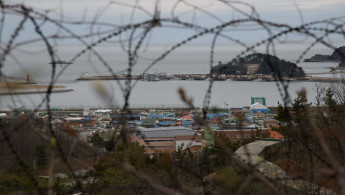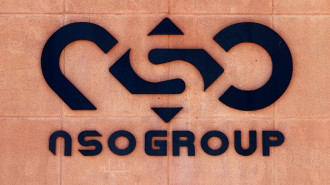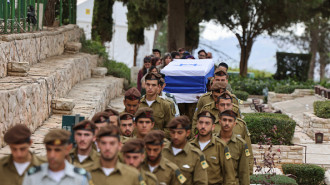North, South Korea trade warning shots on de facto maritime border
South Korea's military said on Monday it had fired warning shots at a North Korean ship that crossed the countries' de facto maritime border, prompting the North to fire a warning in return.
Pyongyang has conducted a blitz of weapons tests, including what it claimed were tactical nuclear drills, in recent weeks, with Seoul and Washington ramping up joint military exercises in response.
With talks long-stalled, North-South relations are at one of their testiest points in years, with Pyongyang's Kim Jong-un last month declaring his country an "irreversible" nuclear power, effectively ending negotiations over his banned weapons programmes.
Never officially delineated by the 1953 armistice agreement that brought Korean War hostilities to a close, the maritime border remains a flashpoint and has been the location of several previous clashes between the two sides.
A North Korean merchant vessel crossed what is known as the Northern Limit Line (NLL) at 3:42am (1842 GMT) but retreated north after Seoul's navy fired warning shots, South Korea's Joint Chiefs of Staff (JCS) said.
"The North's continuing provocations and reckless claims undermine peace and stability on the Korean peninsula and international community," the JCS said in a statement, urging Pyongyang to "stop immediately".
North Korea response
Pyongyang's Korean People's Army (KPA) said a South Korean military vessel had "invaded" the de facto border by 2.5 to 5 kilometres (1.5 to 3 miles) a few minutes later and that the KPA fired 10 warning rounds from the country's west coast.
KPA "coastal defence units on the western front… took an initial countermeasure to powerfully expel the enemy warship by firing 10 shells of multiple rocket launchers toward the territorial waters, where naval enemy movement was detected, at 5:15," a KPA General Staff spokesman said in a statement carried by state media.
"The KPA General Staff once again sends a grave warning to the enemies who made [a] naval intrusion in the wake of such provocations as the recent artillery firing and loudspeaker broadcasting," he said.
North Korea has fired multiple artillery barrages this month into a maritime "buffer-zone" that was set up in 2018 as a way to reduce tensions between the two countries during a period of ill-fated diplomacy.
The moves are part of a dramatic increase this year in what Seoul calls "provocations" by the North, including conducting its longest-ever missile launch by distance, which overflew Japan and prompted rare evacuation warnings.
Seoul has also recently conducted live-fire drills, and the US redeployed a nuclear-powered aircraft carrier to the region to conduct large-scale trilateral drills also involving Tokyo.
"The merchant ship's incursion and the North's artillery firings demonstrate the lack of consensus on the NLL border," Cheong Seong-chang, a researcher at the Sejong Institute, told AFP.
North Korea revised its nuclear laws last month to allow pre-emptive strikes, with Kim Jong-un declaring Pyongyang an "irreversible" nuclear power – effectively ending the possibility of negotiations over its arsenal 👇https://t.co/QlRDThVcb9
— The New Arab (@The_NewArab) October 10, 2022
"The North could attempt to invalidate the NLL later with the backdrop of military confidence in its tactical nuclear arsenal," he said.
Experts and officials in Seoul and Washington have been warning for months that Kim is close to conducting another nuclear test – which would be his country's seventh.
Kim has made developing tactical nukes – smaller, battlefield-ready weapons – a priority, and Seoul warned recently the North could be preparing to conduct multiple consecutive nuclear tests in a row as part of this drive.
Monday's exchange of warning fire comes on the same day that US Deputy Secretary of State Wendy Sherman is expected to hold three-way talks with allies Japan and South Korea in Tokyo in a show of unity after the North's slew of launches.





 Follow the Middle East's top stories in English at The New Arab on Google News
Follow the Middle East's top stories in English at The New Arab on Google News


